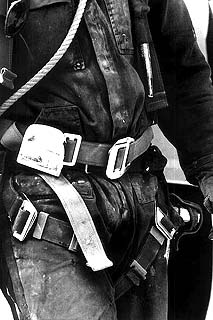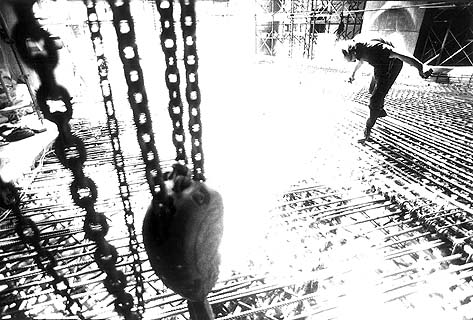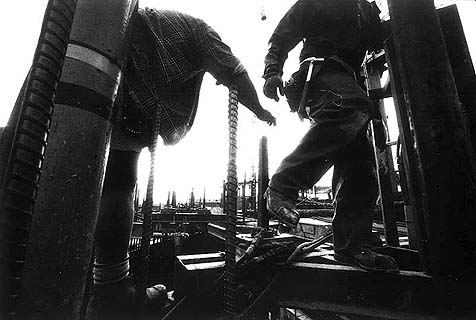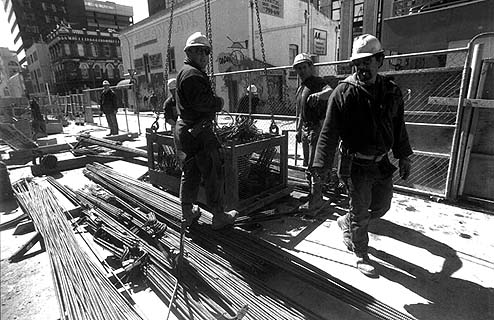SKYTOWER: where reality meets myth

|
See also
Auckland Sky Tower Photo Gallery
101 Uses for the Auckland Sky Tower
How it measures up

|
See also
Auckland Sky Tower Photo Gallery
101 Uses for the Auckland Sky Tower
How it measures up
Dorothy gazed enchantedly at the gleaming city of Ours. Beyond the inner suburbs she could see the Great Hara's Tower . She exclaimed with excitement "surely a good wizard lives there. We must set out to find a heart at the centre of that city." So Dorothy and her merry band set forth on that golden road Dominion. When they came upon a gate house, they found the Queen of Hearts playing Wheel of Fortune with Alice, a sultry croupier from Vegas. Alice welcomed Dorothy to the royal court, requesting that she put on tinted glasses, because the Good Witch of Waitakere insisted that all visitors to Emeraldland must believe that everything is green. So Dorothy, who was really just an ordinary little girl from Kansas (with shiny Oroton shoes and green Oakley glasses), checked into the Great Hara's Hotel hoping to fulfil her wildest desire.
Towers are what fairytales and fantasies are made of. From Babel to Camelot, of all elements in the built environment, the tower is perhaps most symbolically powerful, often identified as central to community inspiration. 'Casino' is also laden with meaning . Symbolically complementary to 'tower', casino denotes opportunity, risk, hope and desire, of fortunes being won and lost. There you can be a star at least for a little while as Knofler says, "money for nothing and the chic's for free".
In Auckland it was a stroke of genius to combine the elements of tower and casino. By bringing them together, the aura and mystic of both are raised. The construction and marketing of tower casino is engulfed in unconscious and implicit references to 5000 years of mythology.
One doesn't have to look very hard to find examples of myth-making. For example a parallel can be drawn between the tale of Oz and the television promotion of Skycity. Just as the fairytale suspends reality, a trip to the casino is advertised as a world of fantasy beyond the daily grind. The Wizard of Oz, written by L. Frank Baum at the turn of the century, is the wonderful tale of an orphaned little girl who lived in a countryside parched from drought. Dorothy's Aunt Em's lips, cheeks and eyes had turned grey from the heat of the sun. Em was thin and gaunt, and never smiled, and Uncle Henry never laughed. He worked hard from morning till night and did not know what joy was. A cyclone came and whisked Dorothy away to the land of Oz. There, she travelled to meet the Wizard who lived in the Emerald city - 'a mass of towers and steeples behind green walls, and high up above everything [were] the spires and dome of the Palace of Oz'. After a grand and successful journey our little hero returned home to a freshly built farmhouse, and to the embrace and kisses of her loving Aunt. On the television advertisement for Skycity Casino a man toils away in tones of grey dotting the 'i's' and crossing the 't's', until he visits the casino tower which puts the colour back into his cheeks. 'Work is dull. Play is fun!' Similarly, Dorothy's life was dull until she visited the city of towers, and when she returned to her normal life everything was better.
Mixed Metaphors: A brief history of tower symbolism.
An examination of tower mythology beyond that of the Wizard of Oz throws up a range of interesting tales and associations.
The Egyptian Obelisk of Luxor, constructed at the time of Moses, was erected as a monument to sun worship. However, its hieroglyphic decorations which were added afterwards are commemorative of battle victories. Three thousand years later Alexandre-Gustave Eiffel designed a 300m tower for the world exposition of 1889 in the belief it symbolised the century of industry and science. Eiffel's masterwork was at first so disliked that the writer Victor Hugo ascended it every day, in the knowledge that the tower was the only location in Paris that he did not have to look at the 'repulsive column made of screwed-together tin'. Like the Obelisk of Luxor, the Eiffel Tower is commemorative of an ideological 'battle', celebrating the French Revolution of 1789 which heralded the age of liberty, equality and fraternity.
New Zealand is not without its own indigenous celebratory tower of sorts - the hakari stage. These were constructed up to 30 metres high, and upon which food and gifts were placed during celebrations.
The Lighthouse of Alexandria, built two thousand years ago was taller than Auckland's Cooper Lybrand Tower. One of the seven wonders at 140m high, it stood for 1,606 years, finally being toppled in an earthquake in 1326. Originally constructed as a memorial to Alexander the Great, it came to be used as a lighthouse as shipping on the Nile expanded. Consequently the lighthouse has become a symbol of orientation and longevity. Insurance companies, whose business relies on an image of longevity and prudent direction, have since used the lighthouse-tower as a logo.
Castle towers enabled those above to pour hot lead over miserable conscripts below, while giving lookout superiority. By raising the viewer closer to the heavens, height provided them with the 'third-dimension', the ability to see into the distance and thus into the future. Looking down upon nature the tower dweller is omniscient, surveying and claiming a kingdom. Below, the plain-bound live out their two-dimensional lives unable to see the 'plan'.
Parallels can be drawn between dominating the landscape and the dominance of modern corporations and their preference for tower buildings. High places are often taken by the elite, their views commodified, and in most cases access is barred to the public. Some have suggested that the tower provides the ideal marketing platform in the form of 'skyline legibility'. The taller the tower, supposedly the more dominant and profitable the corporation.
Prior to capitalism and the dominance of secular corporations, the church dominated the political economy in the west. As such, the majority of towers built previous to this century were commissioned for religious purposes. Of course the church tower is not simply a Christian icon. In the Middle East and North Africa minarets represent 'congregation' and call to worship. Through time the connection between tower and spirituality has been lost as new associations have developed. For example the bell tower of Pisa once functioning as the call to worship has been appropriated by the tourist industry as a symbol of Italy.
For five millennia the tower has been the ultimate of artificial constructions, an icon to humankind's defiance of the forces of nature and acts of god, gravity, earthquake, hurricane, and fire. However, whether the tower is still on the cutting edge of technology and human aspiration is debatable. For centuries high technology has been embodied in extremely visible feats - the cathedral, the hydro dam, the steam engine and the skyscraper. At the end of this century high tech has shifted its association from the huge, to the minuscule, to the invisible, from the tower to the microchip and now to virtual reality. Moreover the tower's inspirational height has been superseded by aeronautic successes such as the moon landing, while being rendered impotent in comparison to the hellish force of the atom-bomb.

King Kong and the Wizard: The tower goes to the movies.
[Kongwi, the feared bird-beast of the Hauraki gulf, is captured and put on display in the Aotea Centre for all to see]
In a fit of jealous rage Kongwi smashed the chrome steel chains that bound him to the stage, grabbing Lanna in his huge beak, he marched towards the casino. Lanna cried out " No. No. No. Not the Wheel of Fortune - again - pleee-ase anything but that!" Kongwi, ignored the blonde's cheesy grin, and clawed his way inexorably towards the top of Emeraldland's new communication spire [the rest of the story you already know]
Despite the apparent symbolic obscelesence of the tower, the film industry has maintained the love affair it has had with the tower since its earliest days. Of all of these movies the 1933 cult classic King Kong is perhaps the most memorable, however dated its attitudes to colonisation, women and other cultures. It pitches the highest technological achievements of western civilisation of that time - gas bombs, the biplane and the Empire State Building - against a primordial beast symbolising the (original) strength of nature. Although it was a biplane that eventually defeated the huge beast, the Empire state Building, only two years old when this movie was made, oversaw nature's symbolic defeat.
Over the last decade the tower has gained more sinister associations especially in near-future sci-fi. For example in 'Brazil', Gilliam's black comedy based loosely on Orwell's '1984', the tower and its mechanical services are characterised as an extension of 'Big Brother' to revealing the despotic nature of 'centralised' control. Like Brazil, 'Bladerunner' creates a menacing image of city and streetlife amongst Los Angeles' dark and decaying towers. Rutger Hauer, plays a 'synthetic' anti-hero who undergoes a Christ-like transfiguration, eventually falling from the roof of a skyscraper, giving his life to save the 'robotic' love of Harrison Ford. Gotham city is similarly portrayed in 'Batman', its climax being reached as the Joker falls from the top of Gotham City Cathedral.
The tower is transformed into a cross between purgatory and the pearly gates in 'Freejack'. Its 200 storey skyscraper, which combines a Celtic cross, a computer and a 50's style space station, is omnipresent in every camera pan across the city. Atop its spire, the 'Spiritual Switchboard' prolongs the mind of the McCandles (Anthony Hopkins) so that it can be substituted into the hero Alex furlong (Emilio Estevez). Here the tower is ambivalently reinterpreted as gateway to heaven and infinity.
Despite the destruction of the Empire State Building in Hollywoods most recent blockbuster Independence Day', in the very successful 'Sleepless in Seattle' the tower is nostalgically revisited. Here in the setting sun, a long distance infatuation is consummated in the best traditions of 'they lived happily ever after' - the famous New York tower being associated with traditional family values, sentiment, romance, and hope.

Barbara Babel and Betting
Perhaps the the most interesting myths that surround the tower are biblical, rather than purely fictional. For example the destruction of the Tower of Babel which represented a challenge to God's singular authority, (Genesis Chapter 11) and the subsequent scattering of its builders and the creation of new languages, has led to postmodernist contempt for towers, which they interpret to be an icon of mono-culturalism.
The story of Saint Barbara's martyrdom is not so well known. She was imprisoned in a tower by a father who did not approve of her suitors. Converted to Christianity during her incarceration, she persuaded some friendly masons to place a third window in her turret to represent the trinity as a show of her faith. When her father returned, he became so angry at her defiance that she fled in fear. Betrayed by a shepherd, she was recaptured and put under the sword by her father, but just as the cruel blade smashed her neck he was struck by lightning. A parallel can be found between Barbara's tale and the gruesome fairytale of Rapunzel, the girl locked in a tower by an evil witch. Of course women being kept in towers does have some substance in fact, for example the imprisonment of Mary Queen of Scots in the Tower of London.
In religious paintings Saint Barbara is portrayed holding a peacock feather, the symbol of everlasting life. Interestingly, Harrah's Casino symbol bears a strong resemblance to a fan of peacock feathers.

Numbers and Progress
Most of all tower and casino are metaphors for number, whether 1920s, 1930s, 1980s, 1990s, height, dollars, volume of concrete, number of lifts, steel weight, jobs or profits.
The Auckland Skytower Casino is strongly associated with the events of the American 1920/30s. Parallels can be drawn between the stock market crashes of 1929 New York and 1987 Auckland; the subsequent depression and recession of the 1930s and 1980s; the proliferation of tower building in 1920s New York and 1980s Auckland's ; the tallest yet unoccupied 1931 'Empty State' Building, and the vacancy rates of Auckland's 1990s office towers; and finally the popularity of 'numbers' and 'speak easies' during Prohibition 1920s and 30s, and the rise of Lotto, Keno and Casino in the 1980s and 90s. The connection between the gambling and the 1930s has not been lost its promoters. Nine years ago, Lotto was first advertised in 1930s dance hall costumes, while this year the opening of the Hurrahs Casino Hotel was marked with a 1930s style ball/launch.
When one considers tower, the staggering material quantities involved in its construction process cannot be overlooked . The depth of cut and the zillion truckloads of earth removed from the site;and the so called cubic kilometre of concrete pour (with at one stage 1/3 of all North island concrete production going into the casino site) are awesome statistics.
Progress as exemplified by tower can be interpreted negatively or positively. To one extreme unrestrained development and over-heated speculation are the worst signs of communal avarice and sick society. On the contrary side of this argument, progress and hope are afforded by new development. Petitions to council claimed 5000 new jobs would be created by this project, with casino dollars boosting the local economy in the medium term. In terms of progress Skytower marked the end of the New Zealand recession. From the depths of our nation's gloom, Skytower became ray of future prosperity with all of Auckland turning out on Sunday afternoons to peer through windows cut into the hoardings surrounding the site.

Worker and Tower
In the final analysis, towers are symbols of teamwork and cooperation. They are triumphs of human energy and courage, and it is in this spirit that Johnsen's images have been conceived. Like her illustrious predecessor Lewis Hine, who documented the rise of the Empire State Building, Johnsen has celebrated the courage, skill and imagination of those that have built Skytower. Just as in 1930, these workmen remain a source of hope and act as role models for those who are struggling in our present society. Skytower is the tangible expression of their efforts. Well done!
"Cities do not build themselves, machines cannot make machines, unless back of them all are the brains and toil of men." Lewis Hine 1932

|
Leonie Johnsen Photographer
|

| |
|
Peter Diprose Author of main text.
|
| |
|
Matiu Carr Design and HTML |
| |
|
Thanks to Fletcher's Construction. |

|